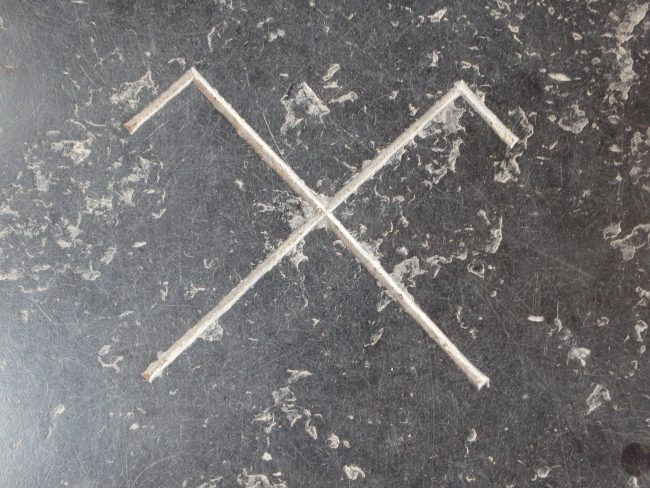On a recent trip to the Netherlands, I toured the fairytale beauty of the little Dutch towns of Monnikendam and Broek in Waterland. The small houses are ancient, exquisitely maintained, and often front charming canals graced with swans and other waterfowl. Flowers are abundant, and of course, each village has its own cathedral dating back hundreds of years. In these communities, many of the early congregation had themselves buried within the church and you cannot avoid walking over the myriad tombstones set flush into the floor of these churches. Going back to the 1500’s, they are an interesting glimpse at history.
One thing that puzzled me, however, was that strange symbols are inscribed, mostly on the grave markers, but sometimes appearing seemingly randomly, placed in the stone floors. These symbols appear distinctly pagan, consisting of linear figures, similar or identical to Viking runes or pagan Lithuanian ideograms.
For example, one grave sported a swastika shape used to depict the Norse sun wheel, another the to invoke the Lithuanian harvest god Jumis. There is a figure that shows the “Sign of the Well”, a pre-Christian symbol for the gateway to the afterlife. Others depict Viking runic characters such as the diamond-shaped “Ingwas” and the doubly triangular Dagaz.
Why do these appear on Christian graves? Of course, Christianity did not really take hold in the Netherlands until around 1000 AD, but these graves dated hundreds of years later.
I put the question to a friend of mine who worked in forensics with the Amsterdam police for many years. His capable sleuthing quickly found the answer. Whereas wealthy, arm-bearing families would have their own coat of arms to use to identify their affiliations, the less affluent couldn’t afford proper arms. Hence these families used much less complex figures to show their clan… in this case, the very ancient runes that they would have been familiar, which could be modified and built on to denote new families. This wasn’t considered necessary until a family member became established on a new property, but then it was required. 
So this is the reason that pagan symbols dot the floors of Dutch Christian churches. Nothing ominous about it at all.
Of course, somebody like Stephen King might come up with another explanation…
Photo Credits
All photos courtesy of George Burden and Stella van der Lugt


The swastika is identical to my family coat of arms , minus a rose shape in the middle of the swastika : I would love to know where you found it !
Thank you !
George,the pagan symbols that you saw both in the churches & in the grave markers date back to the Viking mIgrations..
In fact , the carving that you called a swastika,actually is a what the vikings called a mundelfari.. is symbol of unrestricted power
The other one is a wolf croos